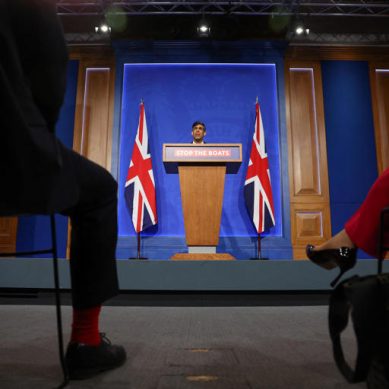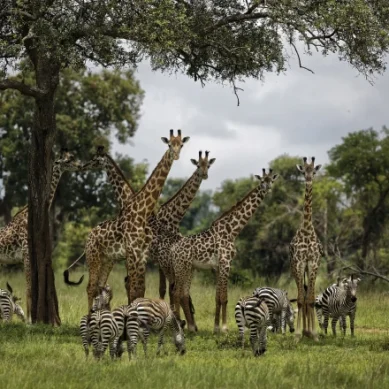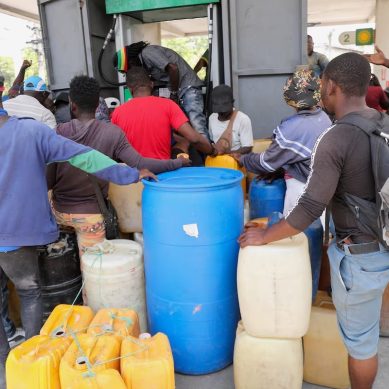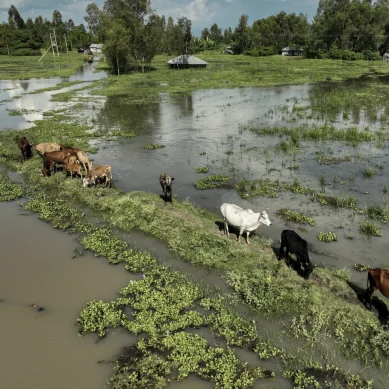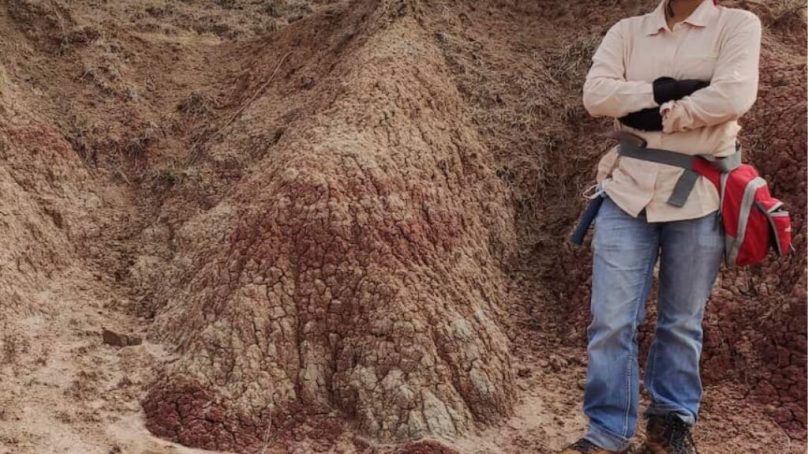
It was a scorching summer morning in 2018 in rural Purulia in West Bengal, when geologist and palaeobiologist Sanjukta Chakravorti, who was working on her PhD thesis then, had taken a break from her excavations and was approached by two school girls.
“Didi, what are you doing?” one of them had asked.
Dr Chakravorti had grabbed the opportunity to talk about her work in layperson’s terms. Soon, her open-air classroom attracted more onlookers, and the researcher found herself addressing a small gathering of villagers, awed and inspired by her work.
This slice of memory is something Dr Chakravorti cherishes, but for many women fieldwork is fraught with anxiety. An article on how female scientists in the West had to forge their way ahead in fieldwork provides a nuanced look at the issue. Such an account from an Indian perspective, however, is largely missing.
Fieldwork is a vital part of scientific research in many disciplines like evolutionary biology, herpetology, palaeontology, marine biology and environmental studies. But for female researchers and students, fieldwork continues to pose several challenges.
Apart from safety concerns, lack of sanitary facilities, the need to balance family commitments and dearth of support from authorities come in the way of completing their projects.
Furthermore, issues surrounding fieldwork are not specific to rural or remote areas either. Director, Research Centre & Lead, at the Centre for Climate Change at Azim Premji University, Dr Harini Nagendra, says women in the industry face safety concerns in urban settings, as well.
As a precautionary measure, her team members never function alone, especially when conducting door-to-door assessments or exploring peri-urban and less-frequented parts of cities.
Dr Chakravorti adds, “A question that women get asked constantly is what fayda (benefit) they get from staying away from home in a remote location. Families question whether it is worth the trouble and also why they couldn’t take on a job that would be much less hassle and more money.”
While these challenges cannot be tangibly measured, their ripple effects are evident. For example, only 16 per cent of the subject editors of 10 prominent journals, focused on evolutionary biology and natural resource management, were women. A more recent publication reinforces this fact for the editorial boards of geology journals. These are the subjects that require extensive fieldwork and on ground research.
Despite these hindrances, several researchers today are paving the way for the next generation of women in science to incorporate field studies into their research seamlessly.
For Dr Divya Karnad, memories of her first on-field research project are still fresh in her mind.
“My experience in fieldwork began after I completed my bachelors. I got the opportunity to work on a biodiversity project in the Western Ghats, and it really changed my worldview. To be cut off from basic forms of communication while dealing with the day-to-day activities in the middle of nowhere was a huge challenge,” she recalls.
Dr Harini Nagendra ensures that as a precautionary measure, her team members never work alone; especially in less frequented areas.
An assistant professor of environmental studies at Ashoka University, Dr Karnad has since travelled extensively along India’s coasts for her research on marine ecology. She credits her interactions with fisherfolk and her onground experience as the impetus to establish her marine conservation initiative InSeason Fish, which shares sustainable seafood calendars to educate people on what fish to consume when, depending on their breeding time.
Her emphasis, though, is on taking care of one’s mental health while on field. Since not many women opted for fieldwork earlier, it often became a lonely affair, besides all the problems arising from lack of sanitation facilities and access to healthcare.
For the most part, fieldwork is still viewed as something that women can do while they are in their early 20s. Once they get married, they are supposed to snap out of it and settle down,” she adds.
Karnad talks about how, during one of her initial projects on the conservation of olive ridley sea turtles, trained local residents refused to work for a woman.
“As a result, the people who landed up working with me were complete novices, and I had to train them. How many Indian families know about herpetology?” asks Dr Ashwini Mohan from her lab in London, where she is currently pursuing a Marie Curie Postdoctoral Fellowship at the Natural History Museum.
Dr Mohan completed her PhD, wherein she studied the evolution of a group of geckos, from the Technical University of Braunschweig in Germany. She’s spent a lot of time amidst the wilderness of the Andaman and Nicobar Islands and other archipelagos in the Indian Ocean.
She explains that while people are unaware of what these field-based sciences entail, there’s also a lack of communication from the scientific community, which exacerbates the problem.
For instance, Dr Mohan points out how existing prejudices, such as those around it being inappropriate for a woman to catch snakes, makes it harder for researchers to pursue these fields. She further explores a gamut of issues, such as obtaining permits from the forest department, finding female role models and trainers on the field, and getting the right guidance at the right time, in her article, Women in Herpetology, along with turtle biologist Sneha Dharwadkar.
According to Aashima Dogra, co-founder of the The Life of Science, an online portal that documents stories of women in STEM, several women featured as part of the project in ecological sciences shared similar experiences of finding it difficult to obtain permits for their work. She also highlights how older women in science say they could have done much more had they pursued field options earlier.
If recognition at the family level is one piece of the puzzle, the other is acknowledgement by the academic community, says Dr Suparna Ghosh-Jerath, professor and head of community nutrition at the Public Health Foundation of India. Her research focuses on understanding the role of indigenous foods in addressing food security and nutritional status among vulnerable communities, for which she’s travelled to several remote areas of Jharkhand.
While mostly women choose to study nutrition, when it comes to working in public health or travelling to remote areas for research and nutrition programme-related activities, they often opt out because of family commitments or lack of childcare support, she says. Additionally, people don’t associate this stream of science with field-based research, which makes it harder for women to justify their passion.
Dr Vandana Prasad’s first on-field research project took her to the hilly terrains of Meghalaya in 1995. She was the only female in a five-member team on a mission to explore microfossils in the region amid heavy rain. Dr Prasad recalls how she was keenly aware that her team members thought she wouldn’t be able to handle the assignment. But today, she is the director of the Birbal Sahni Institute of Palaeosciences, and her fieldwork count ranges somewhere between 30 and 40.
“Things have definitely changed for the better,” she stresses.
However, the challenges that women in science face are multifaceted. As Dogra says, “We are talking about people who come from different backgrounds and face different challenges. So, there’s no one solution.”
Dr Nagendra shares that once safety measures are in place, it’s essential to implement a facilitative approach where fieldwork is made flexible to accommodate the needs of the women. As Dr Mohan points out, the mental image of a scientist doing fieldwork is predominantly one of a man.
- A Nature report
